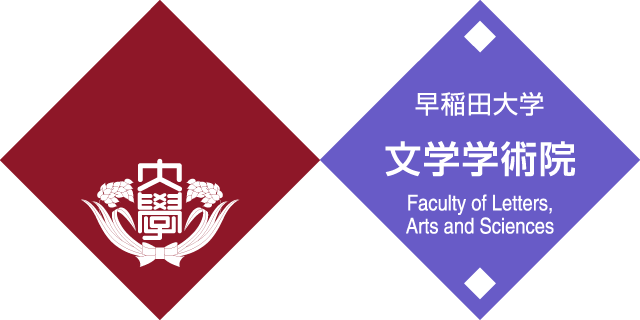- News
- Event Report “Rakugo: Serious Performing Art, Amusing Research Specialty” and subsequent online lecture with Dr. M. W. Shores
Event Report “Rakugo: Serious Performing Art, Amusing Research Specialty” and subsequent online lecture with Dr. M. W. Shores
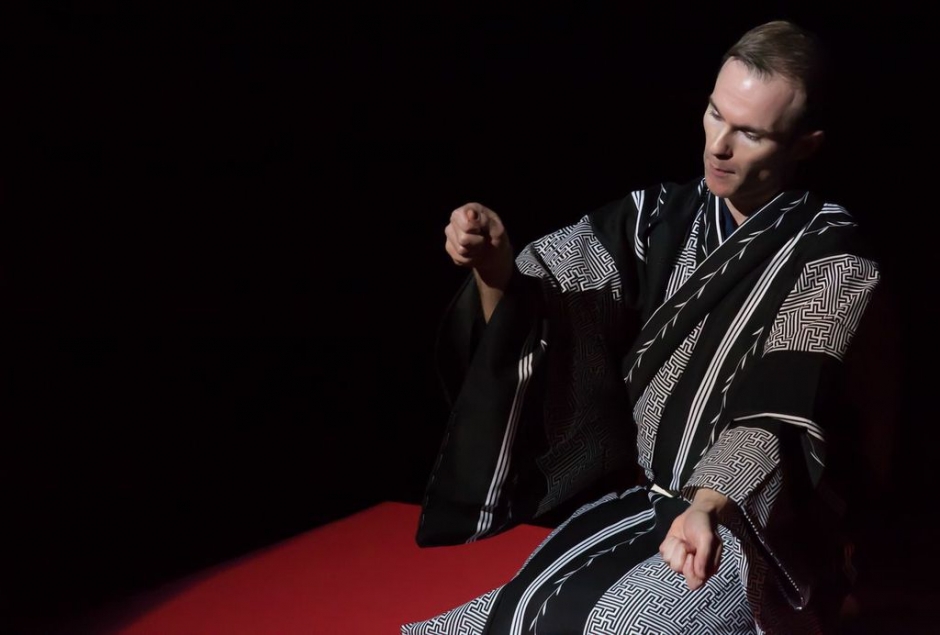
- Posted
- 2022年3月4日(金)
Dr. M. W. Shores from The University of Sydney offered two rakugo-themed events with invitation from Waseda University’s Global Japanese Studies Unit in January 2022. To enrich and further inform the participants on his passion about rakugo as both a performance art and his academic specialty, Dr. Shores performed rakugo stories in English, conducted an inspiring workshop with online participants, and lectured on his newly published book and his experience as an apprentice. This was followed by Q&A sessions where students showed a great deal of interest in rakugo as an academic subject, with special interest in translation and academic approaches.
Online Rakugo Performance, Workshop, and Lecture:
Rakugo: Serious Performing Art, Amusing Research Specialty
The first event took place on January 11, 2022 with Dr. Shores performing three English rakugo stories: Trade Enquiry (商売根問 or “Shoubai Nedoi”) and Herron Hunter (鷺とり or “Sagi Tori”) combined as one performance, and The Bed (寝床 or “Nedoko”) as the second. The performances, although mainly con-ducted in English language, kept the most emblematic Japanese vocabulary and phrases, especially onomatopoeias which Dr. Shores later specified as a significant performative element of the genre. He made great use of handkerchiefs and the fan, which are also essential props in all rakugo performances.
He later demonstrated in the workshop, encouraging participants to envision different possibilities of which props can be used in actual performances. Despite that this performance was delivered online, Dr. Shores insisted participants to turn on cameras and react naturally to the storytelling, which he later remarked as the common understanding that “rakugo is best in a small venue where you can see everyone’s face”. This live aspect and the nature of rakugo performances encourage the interaction between the performer and the audiences.
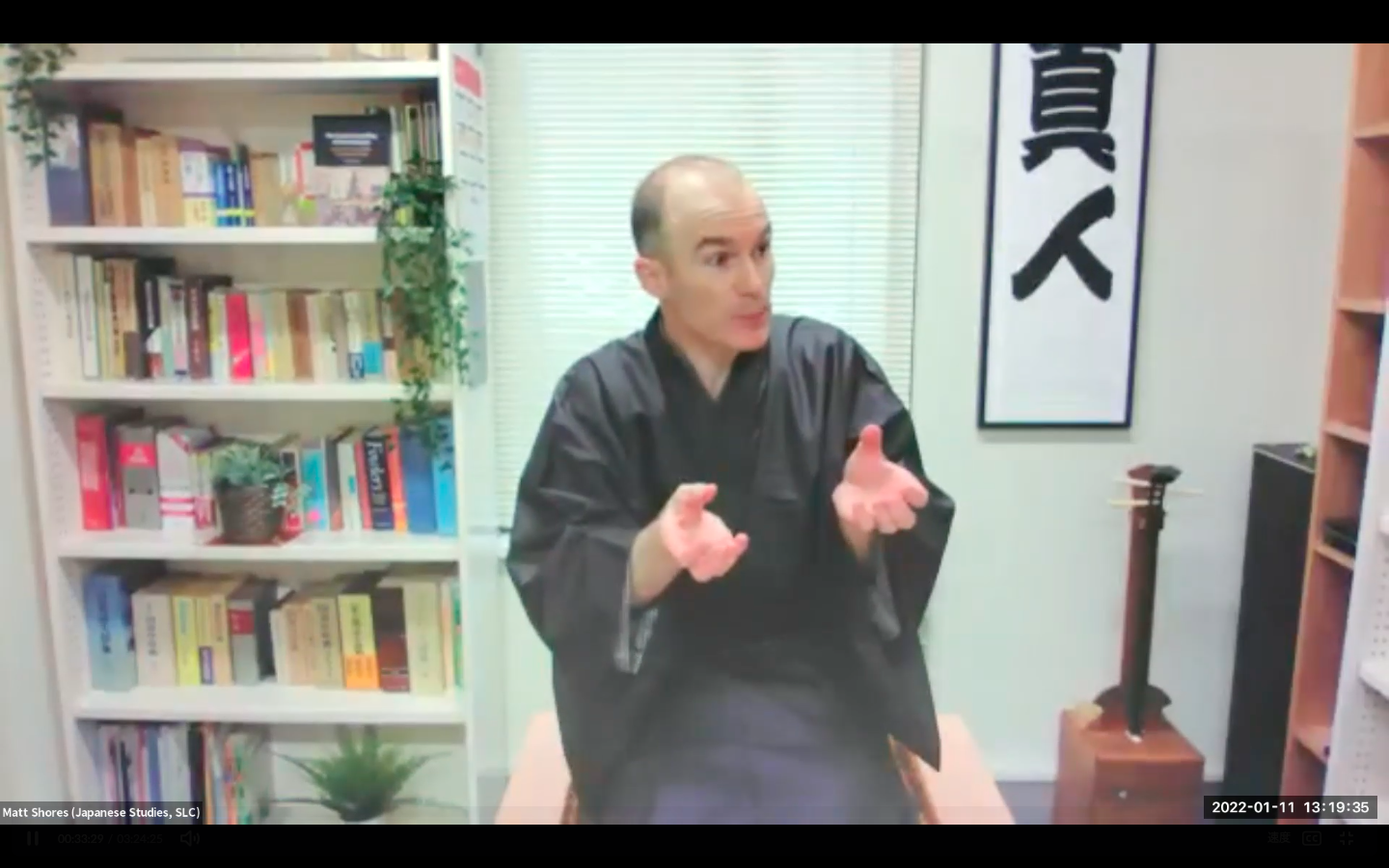
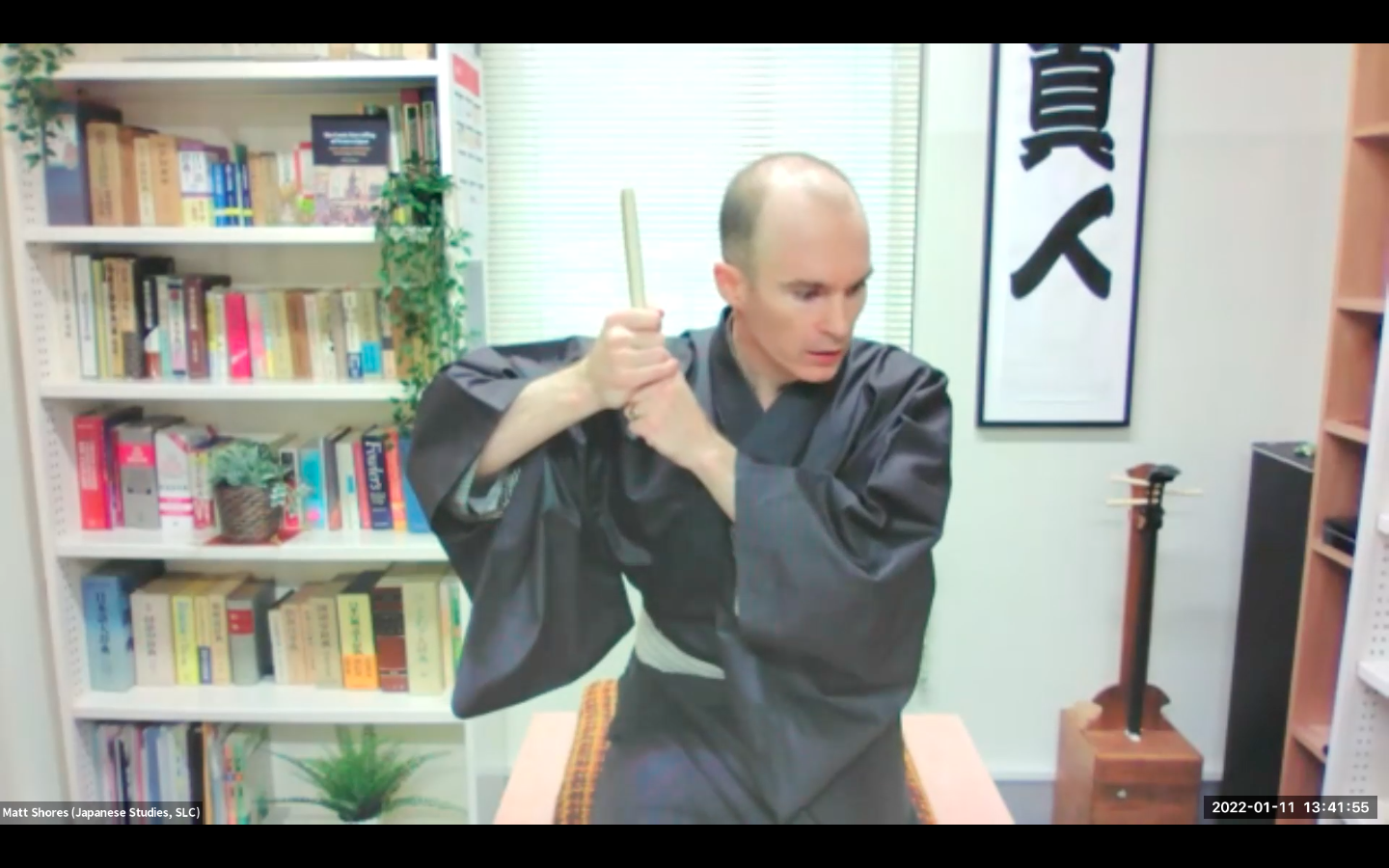
In the accompanying lecture on the 11th’s event, Dr. Shores walked through rakugo history, its development over the past centuries, and its contribution to Japanese culture and contemporary literature. As the rakugo genre grew, its traditions flourished, and it drew large audiences and a deep pool of performers, thus attaining prosperity and artistic prestige.
The genre has typical sub-genres and motifs and employs certain stock characters and character dynamics in order to construct each narrative. There are always variations of every story because there are usually no official performance transcripts and performers have already adapted to alter certain aspects like adding new jokes to attract repeating audiences. The purposes of the genre also may vary depending on the story, but the goal is always entertainment–sometimes there might be lessons and educational discussions as an essential part of the story, but they are mostly instrumental and are designed to entertain.
Most performances consist of introductory pillow talks (マクラ or “makura”), the main body (本題 or “hondai”) and punchline (落ち or “ochi”). Dr. Shores then provided a couple more example stories, each with enlightening connections with contemporary discourses based on performative and narratological investigations into the details of the stories, focusing on the experience and appreciation of the genre from the audience’s perspective. Finally, he concluded on the comical storytelling of rakugo regarding its nature, perception, and further potential to be regarded as academic material.
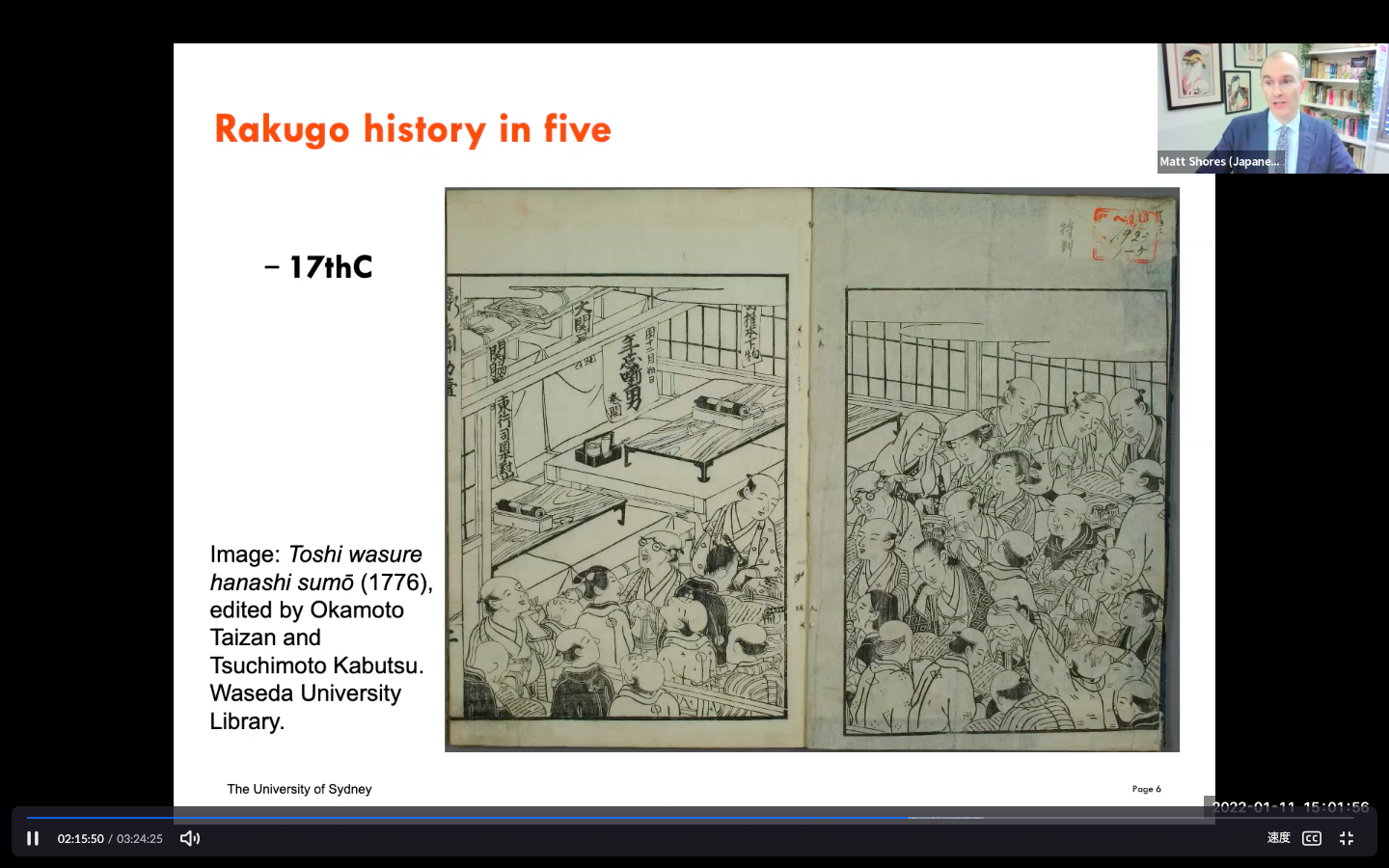
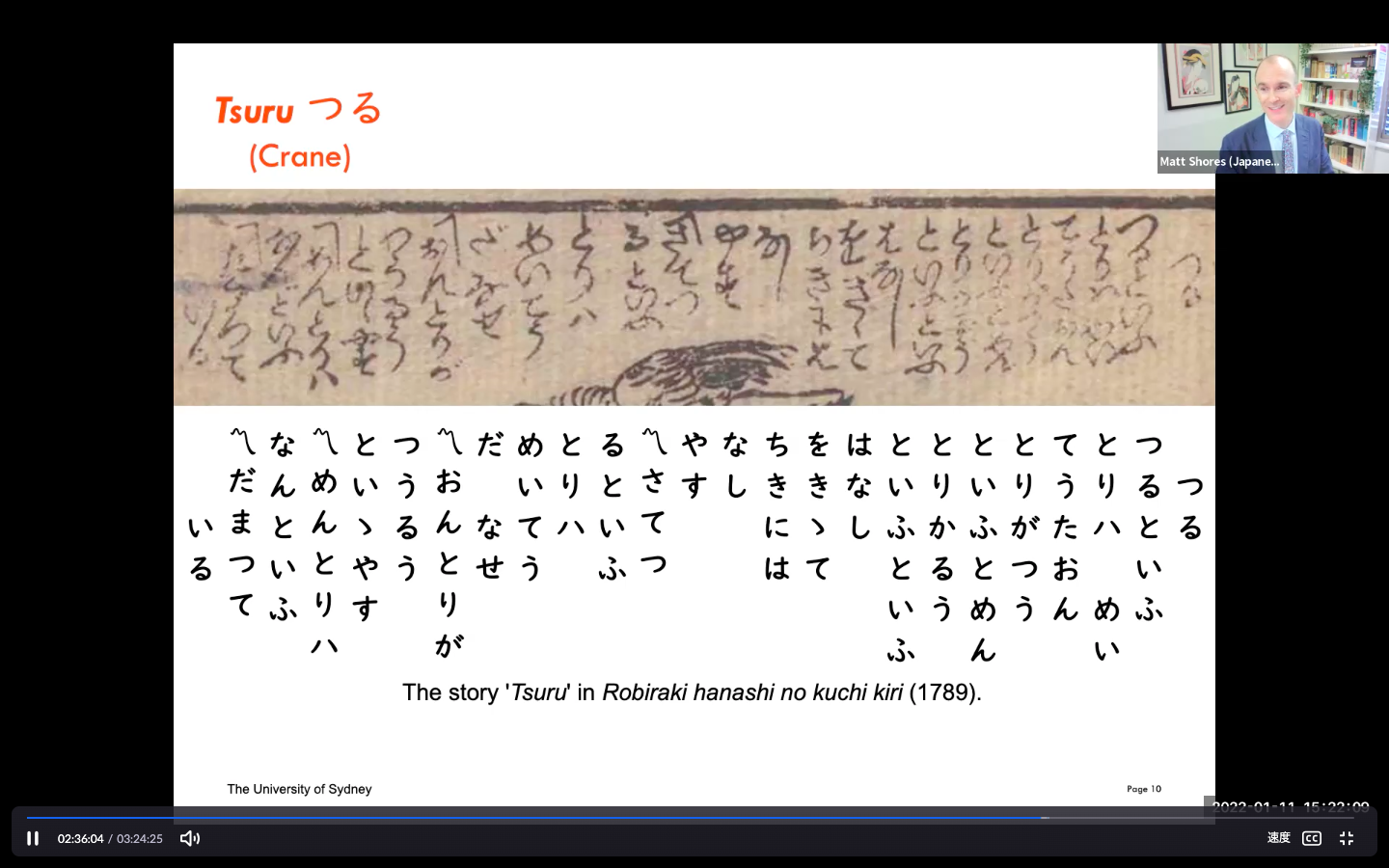
Online Lecture: The Comic Storytelling of Western Japan—that ‘other’ rakugo
The second event, which took place on January 20, focused on the newly released book The Comic Story-telling of Western Japan. Dr. Shores started with some basics about rakugo from the cover woodblock printing, particularly on the performative aspects of rakugo and its reception among audiences. Instead of elaborating on details of rakugo history, Dr. Shores noted that rakugo has been an evolving art and its current appearance could trace back to about 150 years—and, because of its flexible nature, this art managed to attract enough audiences and fans and stay prosperous.
He lent us some insight of his motivation into writing a book: he wanted to present Kamigata (Kyoto-Osaka area) rakugo which has been neglected in previous scholarship in favor of the dominant Tokyo-centric narrative, and rakugo as a performance art genre has more significance as a concrete presentation of Japanese culture. He expressed explicitly his fascination of the genre regarding its storytelling materials, literature, and cultural embodiments.
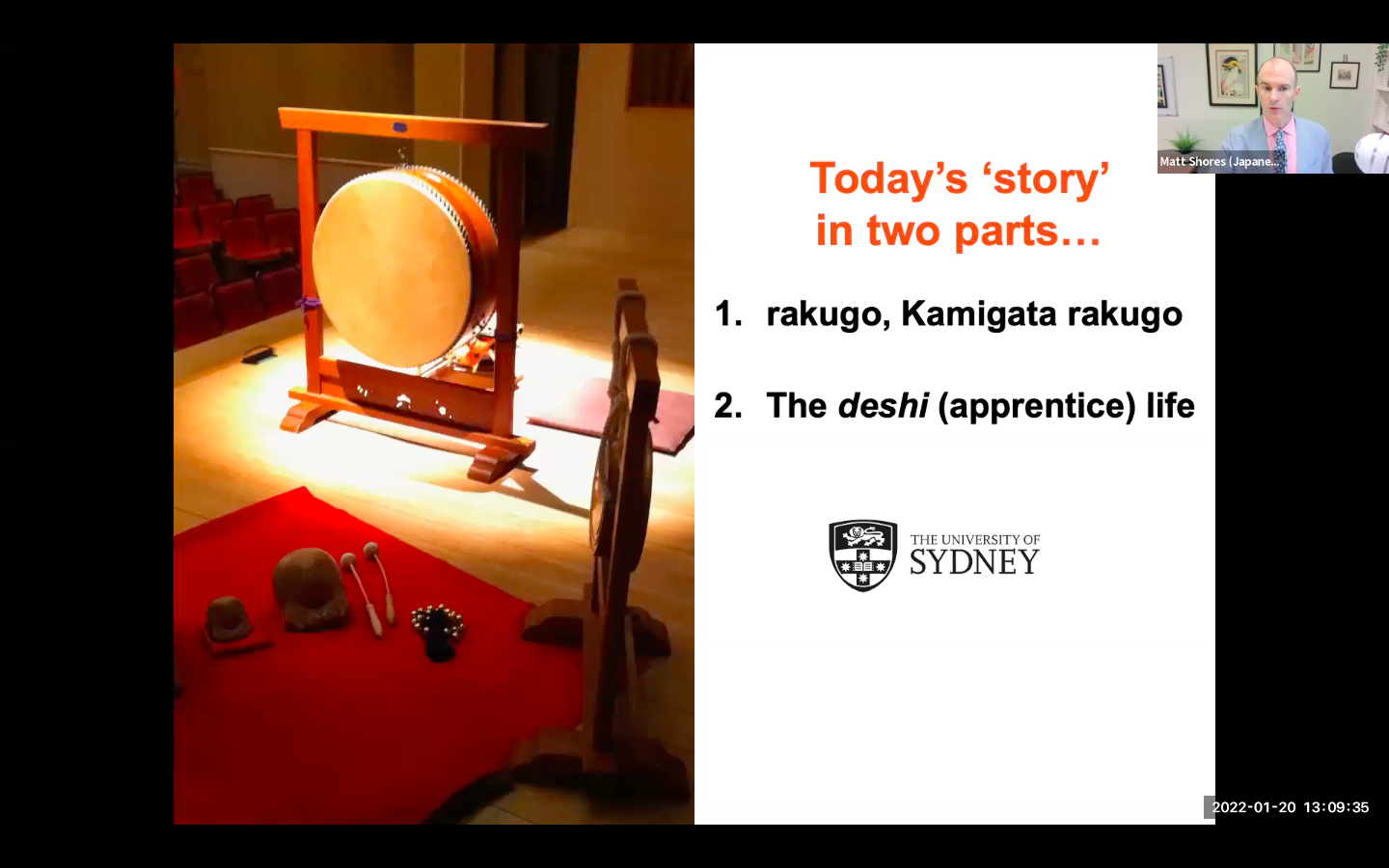
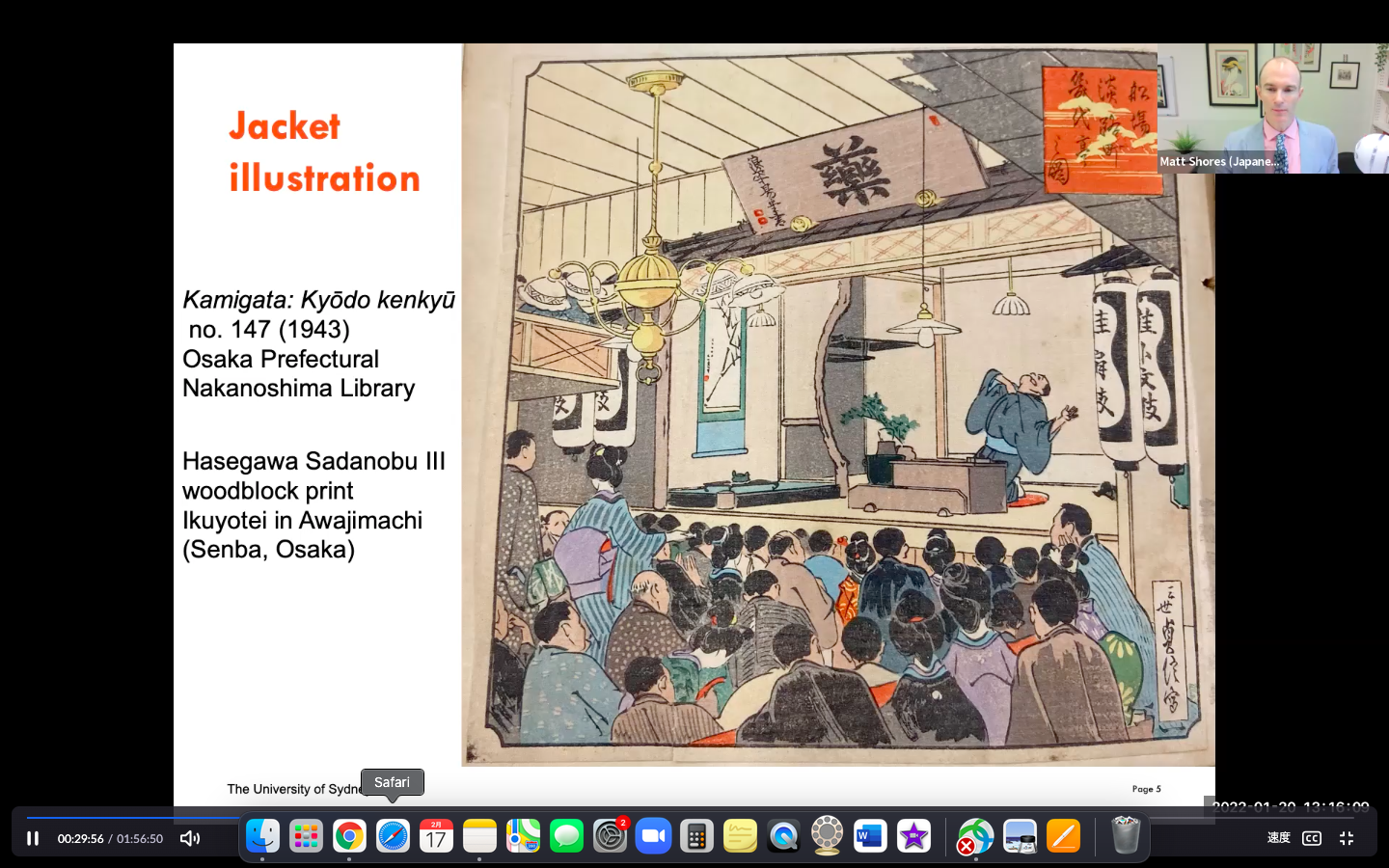
Different aspects of rakugo performance were also introduced to present a clearer image of visual and auditory experience additional to the actual storytelling appreciation, which are unique in Kamigata style. Dr. Shores then moved to introduce literary aspects of the performance such as its merchant-centred content, expression of realism, reflection of contemporary social hierarchies, and some specific characterization techniques. Then he talked of his experience as an apprentice to a couple masters, shared his perspective as an insider of the rakugo performers behind the scenes, and presented his daily schedule as an apprentice and his relationship with his masters.

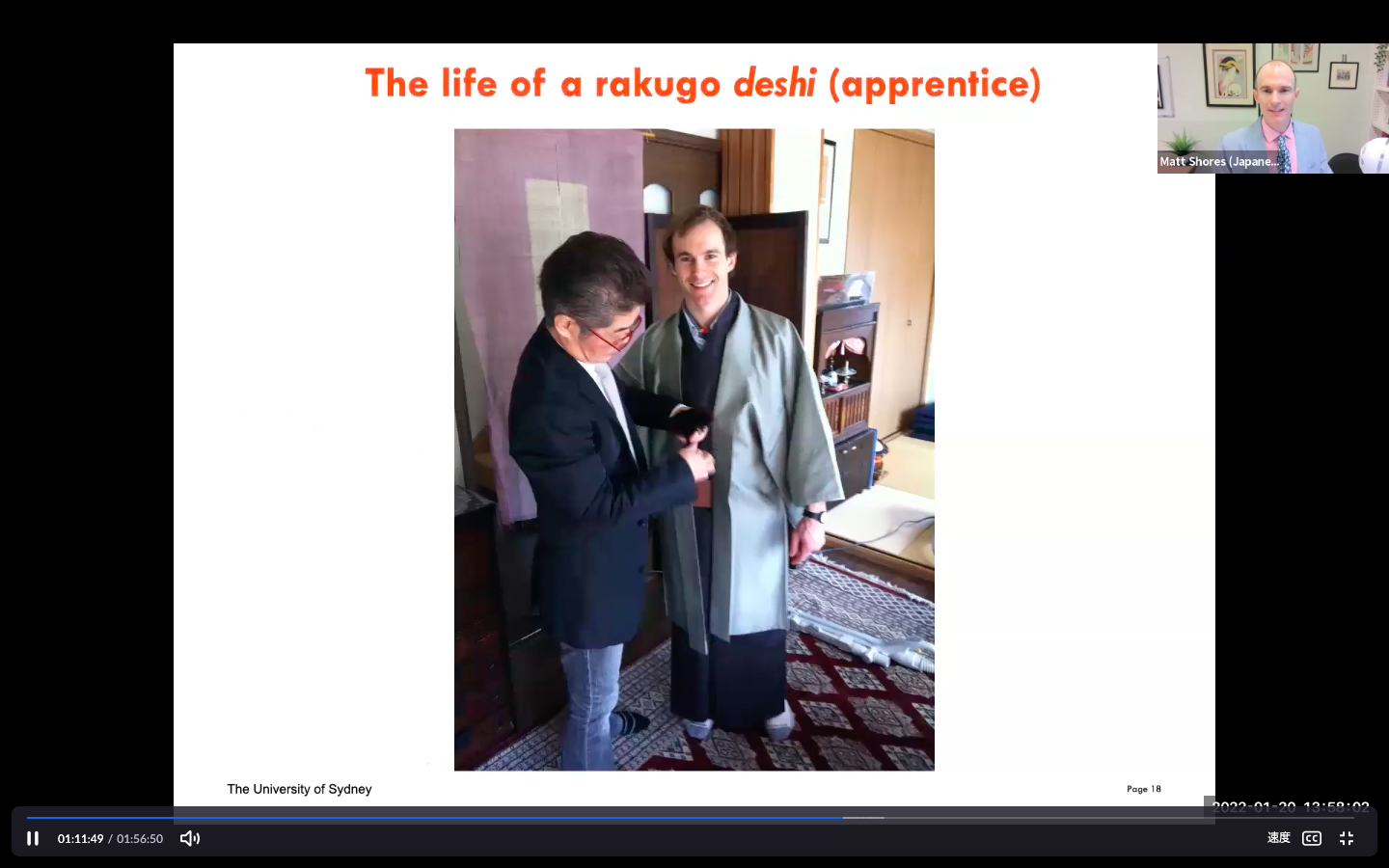
Through this part of tradition, Dr. Shores nostalgically revealed a unique approach to Japanese culture and demonstrated his gratitude of that past experience which become the root of his passion about rakugo. Towards the end of his lecture, he concluded that his writing, aimed at bringing Kamigata rakugo into the academic discourse of Japanese culture and literature, was an example to display and analyze often neglected cultural products and phenomenon, which should call for more attention for the less exposed but profound arts like Kamigata rakugo.
Both events ended with Q&A sessions where participating students actively posed questions, especially regarding Dr. Shores’s rationale of his studies, translation of rakugo and approaching it in English. Accommodating all these questions, Dr. Shores was extremely kind and passionate with more examples and details into the academic scholarship and rakugo stories, which were inspiring and encouraging to younger generations of researchers (postgraduate students in this case) to pursue their own interests. The online series of rakugo events drew to an end with further information on the book he recently published, which has more details regarding rakugo as literature and provides five complete translations of actual rakugo performance texts.
Event Details
Online Rakugo Performance, Workshop, and Lecture:
Rakugo: Serious Performing Art, Amusing Research Specialty
- Date and time: January 11, 2022, 13:00 – 16:00 (JST)
- Language: English (Q&A session: English and Japanese)
- Lecturer: Dr. M. W. Shores (The University of Sydney)
- Venue: Zoom
- Participation is free and open to the public
Online Lecture: The Comic Storytelling of Western Japan—that ‘other’ rakugo
- Date and time: January 20, 2022, 13:00 – 14:30 (JST)
- Language: English (Q&A session: English and Japanese)
- Lecturer: Dr. M. W. Shores (The University of Sydney)
- Venue: Zoom
- Participation is free and open to the public
About Dr. M. W. Shores:
Shores is a scholar of Japanese literary arts and entertainment, with a focus on rakugo and its early-modern precursors, literary and otherwise. He began his career at Cambridge and has been Lecturer of Japanese at The University of Sydney since 2019. Shores has spent over a decade in Japan for research and training with Kamigata Rakugo masters. Cambridge University Press recently published his monograph The Comic Storytelling of Western Japan: Satire and Social Mobility in Kamigata Rakugo.
- Tags
- Event Reports
